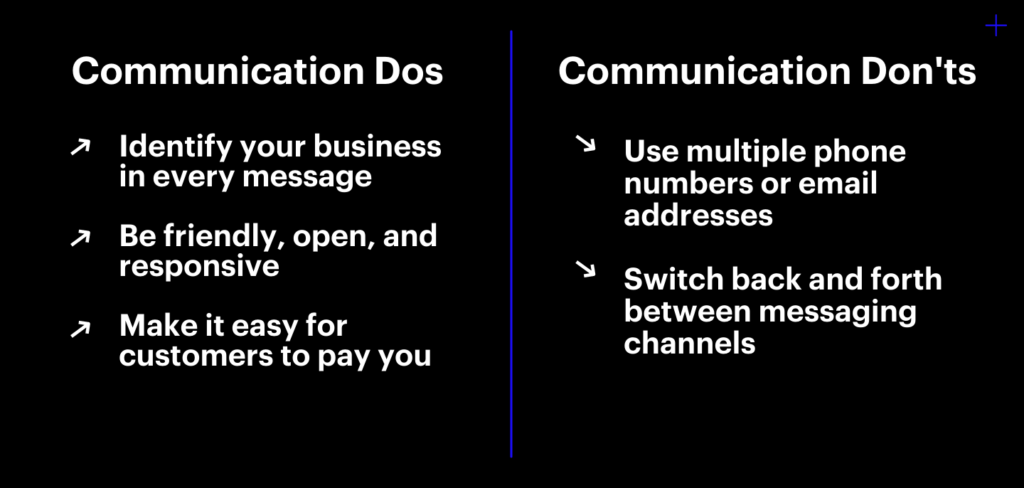Did you know most companies lose almost an entire workday each week (more than 7 hours) because of poor communication? Not to mention thousands, or tens of thousands, of dollars each year. In the past month, I’ve had several interactions with a local company that made me realize how easily this can happen.
Interacting with this company has reaffirmed to me the importance of a good customer experience. Companies need to tailor communication to meet the needs of the modern customer. In this article, I’ll be sharing a few dos and don’ts I’d recommend to the local company I’ve been interacting with—and anyone else who values good customer service.

I hate yard work, so I was thrilled when I found a lawn services business in my town with great ratings. My first experience with them was exactly what I hoped for. They showed up on time and did a fantastic job making my yard the envy of the neighborhood. Unfortunately, that’s when the communication problems started.
Although we’d originally chatted over text, the next I heard from them was in a voicemail. I ignored the call because I didn’t recognize the phone number. (It wasn’t the same one we’d texted with.) I called them back—even though I prefer text—and we talked about my current needs and a weekly mowing schedule. They sent me an invoice to confirm the work, but I didn’t find it for a week because I expected it would be sent by text and they emailed it.
Over the next month, I never knew who I should talk to, and we went back and forth multiple times a day because some info was sent in texts and others in email. When it came time to pay, for lawn mowing, I had to call in to pay over the phone. For my sprinkler services, I had to create a new account on a website.
By the time we had everything up and running, I’d communicated with three different employees on three different phone numbers, two email addresses, and five types of interactions: text messages, email, phone calls, voicemail, and website payments. I was frustrated, and I’m sure they were too.
I’ve been willing to put up with the hassle of working with them because they’re nice people, and I appreciate the quality of their services. However, if I were to sit down and chat with them about their communication, I’d offer the following advice.
Customer Communication Dos
Do: Identify your business in every message. This may seem like overkill but you can’t assume your customer has you saved in their contacts or will recognize your business only from the context of the conversation.
Do: Be friendly, open, and responsive. Sounds obvious, right? It’s one thing my lawn services company got right. They anticipated my needs and were extremely patient.
Do: Make it easy for customers to pay you. I wanted to pay for my services in a timely manner, but didn’t receive invoices for some services and had to use two different payment methods (a website and over the phone). A quick text with an itemized invoice and a total of what I owed would have made it easier for me and them.
Customer Communication Don’ts
Don’t: Use multiple phone numbers or email addresses. Customers might not recognize new numbers, causing them to ignore you as spam. (Poor Tina. I deleted her messages a couple of times because I didn’t know who she was!) You should also consider asking customers which communication method they prefer and sticking to it.
Don’t: Switch back and forth between messaging channels. If a conversation starts in a text or an email, stay there—unless the customer requests that you change. (By the way, Podium makes this easy!) I asked for some additional spring clean-up services, but they missed the request because it was buried in an email thread. By the time they found it, it was too late.

Customers are constantly judging your business based on their communication with you. Taking a few extra steps to make sure that each interaction is smooth will increase their loyalty to you, improve their satisfaction, and increase your profits. Good luck!


